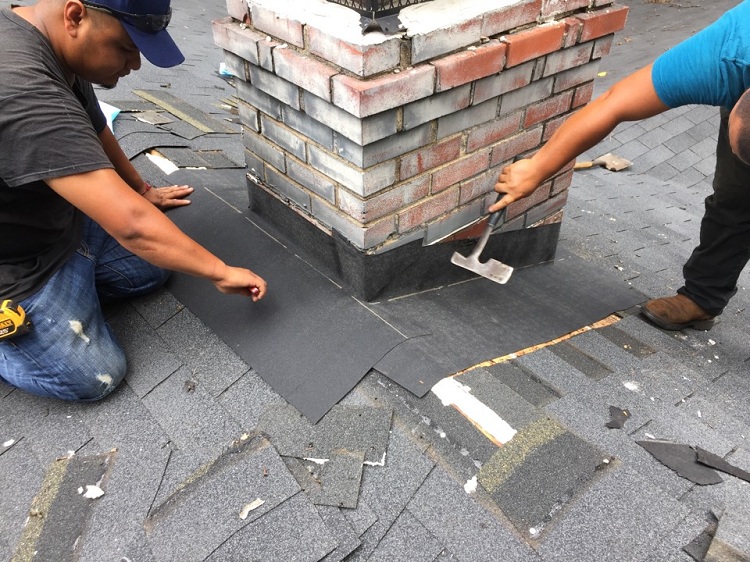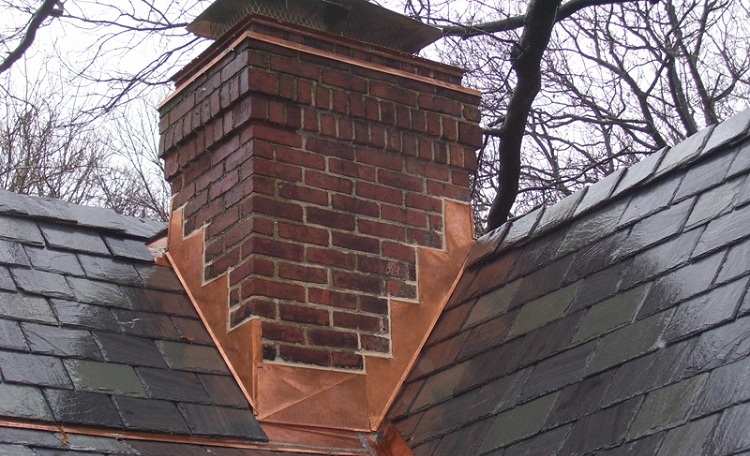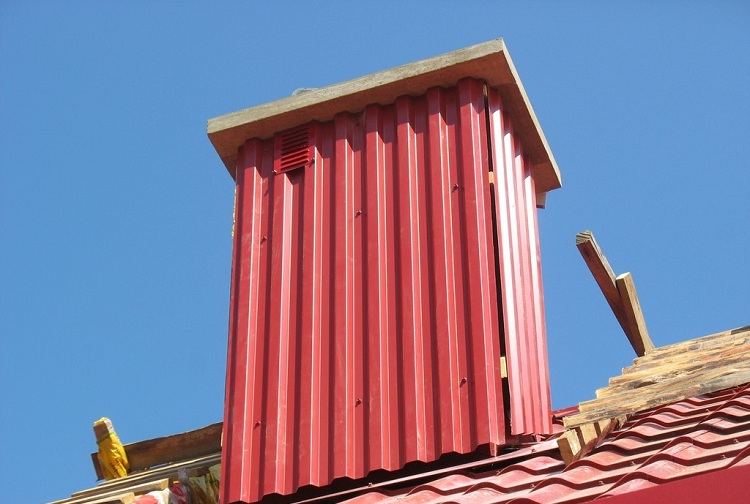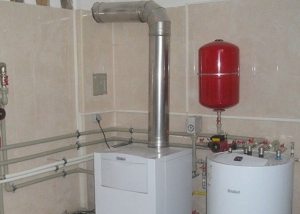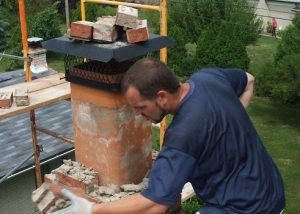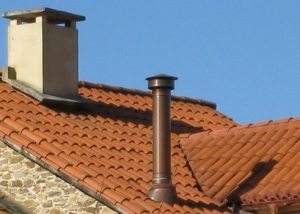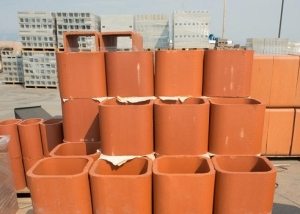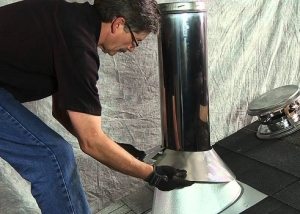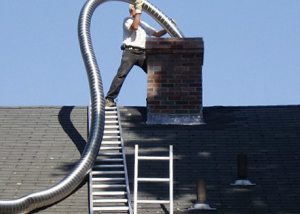The part of the chimney that rises above the roof is exposed to external environmental factors. Therefore, the owner of the house has to think about protecting it. So that the roofing cake does not reduce its functionality, the sealing of the roof around the chimney should be performed qualitatively. In addition, the appearance of the chimney design is of no small importance. He should not discord with the architectural concept of the structure.
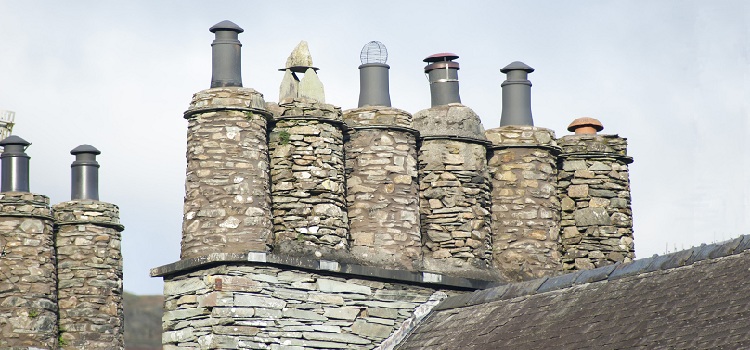
Finishing the chimney with a decorative stone or other material is not only a matter of aesthetics, but also an important component of the thermal and waterproofing of the pipe
Content
The choice of materials for finishing the chimney on the roof
It is necessary to choose a material for decorating the chimney, taking into account its protective capabilities. The following negative factors shorten the life of the flue system:
- high working temperature;
- precipitation;
- ambient temperature difference at different times of the year;
- ultraviolet radiation.
The main problem is the significant difference between the outside atmospheric and the high working temperature, which is why condensate forms in the pipe. This leads to the inevitable destruction of the design of the chimney. In this case, the amount of destructive moisture can be reduced by a good insulation of the flue system using facing materials. They must be resistant to atmospheric phenomena, and also have wear resistance.
Currently, the decoration of the chimney on the roof is carried out using the following materials:
- tile;
- decorative brick;
- roofing material;
- cement slabs;
- ready-made solutions.
Clinker tiles are characterized by high mechanical strength and weather resistance. Most often, high thin pipes are lined with it.
The most practical option is to finish the chimney with a decorative clinker brick. This material is well combined with any kind of roof, and the pollution formed on it during operation is not noticeable.
As a roofing material, corrugated board is often used. This is nothing other than cold rolled steel profiled sheet. The interest in corrugated board is due to the following factors: high protective properties, durability, affordable cost in combination with a sufficient level of decorativeness. The metal structure does not have a large weight, it is easy to assemble, while providing an attractive aesthetic appearance.
Cement boards are popular due to their relatively light weight and various texture variations.
Note! The latter property provides the ability to recreate any surface.
And the material itself is non-combustible and environmentally friendly.
The use of prefabricated structures is an original solution. Most often it is rubber products that provide hydro and thermal insulation.A wide protective apron prevents dirt from entering the roofing cake and protects the design of the chimney system from moisture. In addition, such an apron can be considered as a good design element. It is more suitable for outdoor chimneys made of stainless steel.
Selection of material for decorating the chimney inside the house
In a country cottage, an oven or fireplace is usually built in the living room. In this case, the chimney often passes through all rooms and through the ceiling. In this case, it is necessary to harmoniously fit all the protruding parts into the interior. This is done in the following sequence:
- First, a frame is constructed from a metal profile. Then it is covered with plasterboard sheets. And not ordinary, but fire-resistant, marked GKLO;
- to provide thermal insulation, fiberglass or mineral wool is placed inside the frame. The use of such a heat insulator provides the ability to finish the surface of the sheet with any material, and even simple wallpapering is not excluded;
- at the final stage of decoration, it is recommended to use gypsum stucco or ceramic tiles. They will emphasize the interior features of any style. It is advisable to perform some elements in the form of mosaics, in particular from glass of various colors.
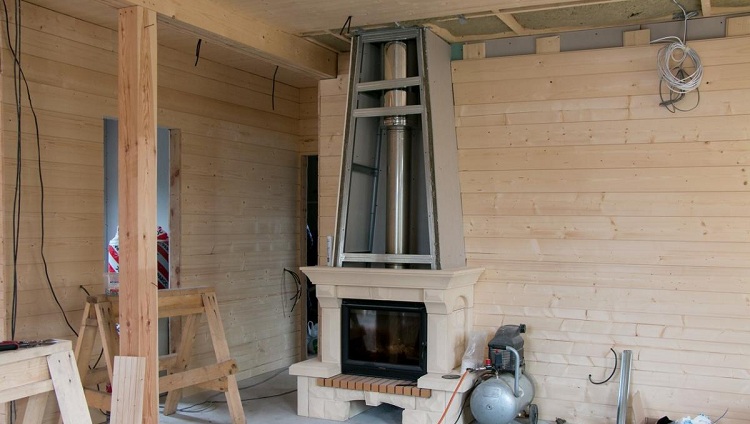
Inside the house, the chimney can be hidden under a frame made of drywall, resistant to high temperature
The most durable and strong for interior decoration is clinker brick. It perfectly suits the interior, made in the style of minimalism, while often there is no need for additional decoration.
To create an antique-style interior decoration and simplicity, plaster is often used. This oldest method still has many adherents.
It must be emphasized that proper thermal insulation of the chimney will provide the opportunity to produce interior decoration with any material. And the choice of decoration method is determined by taste preferences.
What rules and regulations should be followed
Before proceeding to the decoration of the chimney, it is necessary to check whether the finished design meets the norms of SNiP. For ventilation and heating, the requirements include the following items:
- the thickness of the chimneys, for the manufacture of which heat-resistant concrete was used, should be 60 millimeters, clay brick - not less than 120 millimeters;
- the mouths of the chimney pipes should not be an obstacle to the free exit of smoke from the chimney system;
- pipes made of stainless steel cannot be used for chimney equipment when the furnace is heated by coal;
- the use of asbestos materials is not allowed;
- the free space between the roof and pipes must be covered with non-combustible materials;
- for the manufacture of ducts and pipelines, materials having an anti-corrosion coating should be used.
On a note! The use of those materials that are inherent in natural corrosion resistance is also allowed.
In addition, it is necessary to isolate hot surfaces with a heat insulator, providing a temperature difference on the inner part and lining surface of up to 20 ° C.
Stages of finishing. Sealing
Facing the chimney pipe on the roof begins with the installation of a protective apron in the place where it exits on the roof. It is laid in 2 layers: one on top of the coating, and the second winds under the roof. Adjacencies should be carefully sealed.
The need for additional decoration arises in such cases:
- materials used for the chimney stand out from the general view, introducing disharmony in the style of the house;
- when a simple brick was used for cladding, which does not have the proper level of aesthetics;
- for decorating chimney elements facing the roof;
- insufficient draft in the flue system.
Ensuring the sealing of the pipe outlet is the first stage of finishing the chimney on the roof. More recently, the norms of SNiP were prescribed to build expanded brickwork in the place where the pipe goes to the roof. The purpose of this requirement is to perform sealing by bringing the roofing material under the apron. As a result, the design turned out to be bulky and unattractive from the point of view of aesthetics.
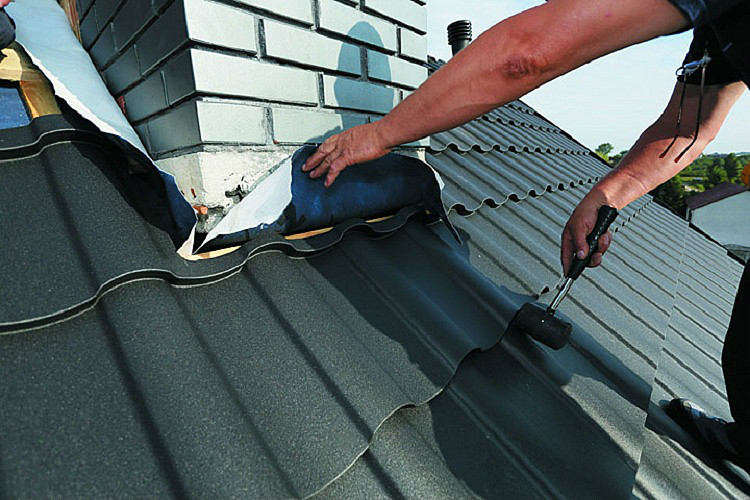
Flexible roofing material must be wrapped in the chimney masonry to ensure the tightness of the joint of the pipe and the roof
Modern materials can eliminate such requirements without compromising the effectiveness of the seal. Any roofing material is wrapped in the laying of the chimney pipe, after which a protective apron is arranged. For the manufacture of the apron itself, galvanized metal, 2-4 mm thick, is used. At the same time, in order to provide resistance to weathering, the presence of a polymer coating on it is required. Aprons are always made from non-combustible materials that can withstand high temperatures.
The most optimal option for the implementation of high-quality sealing is a combination of a metal apron with a protective polymer coating and a flexible sealing tape. Such a tape is made of aluminum foil, and additives of polymer and bitumen materials are used as a self-adhesive layer. Lay it under an apron where the chimney goes to the roof. After arranging the apron, silicone transparent sealant is applied to the seams. Actually, this sealing is completed.
Sewing
When decorating a brick chimney, additional lining is often required. As a rule, it is needed in such cases:
- when the masonry was made of simple brick;
- if the pipe rises above the roof surface to a height of more than two meters, but at the same time weak traction is provided.
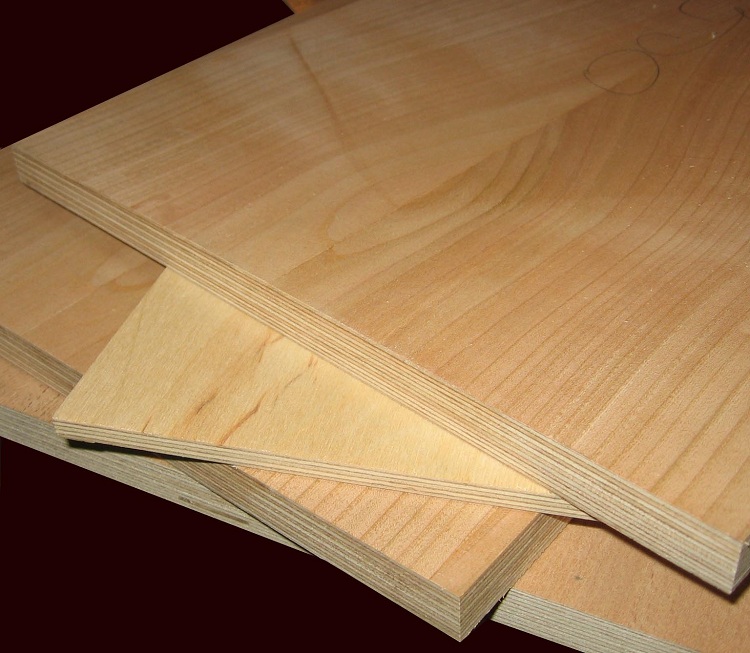
You can use wood to finish the chimney, but there is a risk that the material will absorb condensation
It is necessary to note one more point. It concerns ducts with a light plastic base. Such a technical solution implies the absence of the need for arrangement of brickwork. In this case, the lining of the chimney pipe simply closes the frame through which this communication passes. To assemble the frame itself, metal profiles or a wooden beam with a thickness not exceeding 5 × 5 centimeters are used.
Important! In this case, the wood must first be treated with an antiseptic. Many modern drugs of this type are able to give it protection not only against weather conditions, but also against parasites, as well as increase its fire resistance.
However, experts regard the use of wood as a controversial decision. After all, the tree absorbs condensate well, which is formed during significant temperature differences.
One of the most practical ways is to sheathe the chimney pipe with sheet metal. Installation is quite simple, and the cost of the material and labor costs are minimal. If the thermal insulation is done at the proper level, strong heating of the skin will be excluded. This will cover the metal with rubber paint, which will protect it from the effects of negative weather factors and from UV radiation. And one more plus - the design will receive additional aesthetics.
Returning to the issue of decorating a brick chimney, elements of sophistication will be given to her by the use of decorative stone of natural or artificial origin. It is clear that the weight of the cladding is significantly increased. In this case, it is necessary to ensure the strength of the fastening with the help of reliable connecting materials, otherwise it can simply break off the pipe.For example, in addition to the adhesive composition, the edges of the casing are fixed with dowel or hardware fasteners.
Advantages and disadvantages of facing materials
There is a wide variety of chimney finishes on the market. To make the right choice, you need to know their differences and qualities.
Decking is one of the best materials for decoration, both the roof and the chimney. It is distinguished by light weight, resistance to stress and adverse weather factors. At the same time, manufacturers offer a wide range of colors. As with metal, minus corrugated board - poor sound insulation.
The metal tile is good for its durability and ease of installation. Finishing the chimney with a metal profile will give the structure resistance to weathering and provide it with aesthetics. The disadvantage is the low level of sound insulation. However, this is not critical for a chimney system.
Ceramic tiles are suitable only for interior decoration. She is very demanding on the quality of preparatory work. So, it is mounted on a flat and even surface. The tile is inherent in affordable price and high aesthetics.
Clinker brick is held in high esteem by home craftsmen because of its durability and strength. Moreover, claims to decorative qualities usually do not arise. Among the shortcomings is the relatively high cost and high weight. Therefore, without additional hardening of the design can not do.
Stucco is characterized by resistance to atmospheric precipitation and durability. But in some cases, these advantages are offset by the complexity of styling.
On a note! In addition, the application of plaster often involves painting or the formation of a subsequent layer in a decorative style.
Siding is installed on the chimney for exterior decoration only in the presence of high-quality thermal insulation. The reason for this requirement is that they are made of plastic. The material is mounted on a rigid base. Pros - not afraid of water and non-toxic. Cons - melts when exposed to elevated temperature and flame, low frost resistance and strength.
In conclusion, the main rule should be mentioned that should be followed when decorating the chimney: for the health and life of people living in the house, it should be safe.

